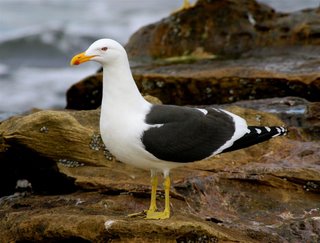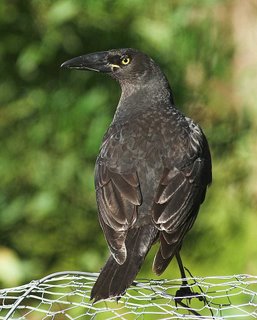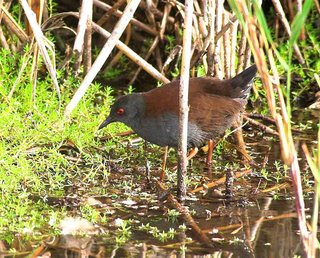 I wandered down to the nearby headland recently (Bellerive), mainly to try out my new toy (digital camera). As I have many times before, I used the local gulls as my subject matter and while editing the resulting images, I was struck by the beauty of the plumages. I probably shouldn't have been surprised as the breeding season for them is imminent and if they're going to impress their potential partners, it's now or never! Gone are the tatty feathers, missing primaries and dull coloured soft parts, and most appear to have paired off already, although there are always hopeful 'singles' to see off. It also gives me the opportunity to add another species to my 'image bank' of Tasmanian
I wandered down to the nearby headland recently (Bellerive), mainly to try out my new toy (digital camera). As I have many times before, I used the local gulls as my subject matter and while editing the resulting images, I was struck by the beauty of the plumages. I probably shouldn't have been surprised as the breeding season for them is imminent and if they're going to impress their potential partners, it's now or never! Gone are the tatty feathers, missing primaries and dull coloured soft parts, and most appear to have paired off already, although there are always hopeful 'singles' to see off. It also gives me the opportunity to add another species to my 'image bank' of Tasmanian birds (accessed via the Tasmanian Species List link on the right).
birds (accessed via the Tasmanian Species List link on the right).The images at right show an adult Kelp Gull in typical pose and another giving a 'greeting' call to its' arriving mate.
While mentioning the Tasmanian Species List, I received an e-mail recently querying 'my' list--I had wondered whether someone might take me to task over it! The truth is that 'my' list is really only a vehicle for accessing the photos from this blog. It isn't by any means a definitive list, and I deliberately relegated the pelagic species to the also rans at the bottom, as I may never get round to photographing them. But it did raise the point about a legitimate list for Tasmanian birders (and visitors). I think it might be something that Birds Tasmania could take on board (they may be in the process of doing so), as they are effectively the record keepers. I would like to see a list on the www. that could be printed out (probably a pdf.) with brief status and a few columns for ticking off species, probably 'back to back' A5 size, to fit in the Field Guides. The Chicago Ornithological Society has an excellent example of what I envisage at www.chicagobirder.org (click the link under 'Featured Links' for checklist). Food for thought?












